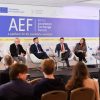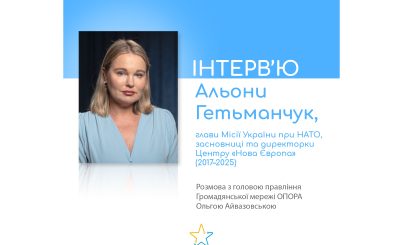Expert comment for Chatham House by Leo Litra, Senior Research Fellow, New Europe Center, and Duncan Allan, Associate Fellow, Russia and Eurasia Programme, Chatham House.
Please find the comment on Chatham House website here.
The president has attempted to use the so-called Steinmeier Formula to find a compromise on holding elections in the east of Ukraine. But he has run into a stark reality: Moscow and Kyiv’s interests remain irreconcilable.
In 2016, the then-German foreign minister, Frank-Walter Steinmeier, suggested a way around the impasse in east Ukraine.
He proposed that elections in the areas held by Russian-backed insurgents – the ‘Donetsk People’s Republic’ (DNR) and the ‘Luhansk People’s Republic’ (LNR) – could be held under Ukrainian legislation, with Kyiv adopting a temporary law on ‘special status’, the main disagreement between Russia and Ukraine in the Minsk Agreements. This law would become permanent once the Organization for Security and Cooperation in Europe (OSCE) had declared that elections correspond with OSCE standards.
The reaction in Ukraine was strongly negative. The so-called Steinmeier Formula contradicted Kyiv’s position that elections in the occupied Donbas should only go ahead in a secure environment – requiring the prior withdrawal of Russian forces and the return of the eastern border to Ukraine’s control. It also did not address the differing views of ‘special status’; Russia demands a much greater devolution of constitutional powers to the DNR and LNR regimes than Ukraine will grant.
But on 1 October, Volodymyr Zelenskyy, the new Ukrainian president, announced that he was signing up to the Steinmeier Formula. He also announced a conditional withdrawal of Ukrainian forces from two frontline areas in the east.
Quick reversal
During the 2019 presidential election campaign, Zelenskyy repeatedly promised that, if elected, he would re-energize efforts to end the war. This appealed to many Ukrainians, who understandably want the conflict over, although Zelenskyy’s eventual electoral victory was largely won on domestic issues.
But his initiative quickly ran into two problems.
First, following a major prisoner swap in September, Russian President Vladimir Putin appeared to judge that Zelenskyy was in a hurry to deliver his election promises and was acting without consulting France and Germany. Russia had earlier demanded that Ukraine formally agree to elections in the Donbas as the precondition for a summit of the ‘Normandy’ powers (the diplomatic format comprising leaders of Ukraine, Russia, Germany and France, which has not met since 2016).
Moreover, the US, which is not part of the ‘Normandy’ group, has seemed disengaged because of domestic controversies. Concluding that Zelenskyy was vulnerable, the Kremlin welcomed his announcement about the Steinmeier Formula but declined to assent to a summit, hoping to extract further concessions.
Second, Zelenskyy’s action triggered protests in Kyiv and other Ukrainian cities. Critics feared that he intended to make unilateral concessions over ‘special status’. Though he tried to assure Ukrainians that ‘there won’t be any elections there if the [Russian] troops are still there’, concerns were fuelled by what many saw as his lack of openness about what the Steinmeier Formula really meant. Ukrainian public opinion wants an end to the war, but apparently not at any price.
Zelenskyy duly rowed back. During a marathon 14-hour press conference on 10 October, he emphasized that he would not surrender Ukraine’s vital interests. He also acknowledged that he had been insufficiently open with the Ukrainian public. For the time being at least, he seems to have been given pause.
A situation resistant to compromise
Instead, Zelenskyy may now attempt to ‘freeze’ the conflict by ending active operations. This is not Ukraine’s favoured outcome but could be the most realistic one in current conditions.
Russia still calculates that time is on its side. It believes that Western support for Ukraine is lukewarm and that Kyiv will eventually have to give it what it wants. Russia clearly felt no pressure to respond positively to Zelenskyy’s overture, which it probably read as a weakness to be exploited.
For these reasons, Zelenskyy now appears less optimistic that rapid progress to end the war is possible. A new summit of the ‘Normandy’ powers may happen but looks unlikely in the near future. This may act as an incentive for further bilateral negotiations between Ukraine and Russia, such as those which delivered the prisoner swap. However, a diplomatic process managed by Zelenskyy and Putin alone risks reducing Ukraine’s leverage.
Finally, the main obstacles to implementation of the Minsk Agreements – radically different views of elections in, and ‘special status’ for, the DNR and LNR – remain. The Kremlin’s versions of both would gravely limit Ukraine’s sovereignty; Kyiv’s would facilitate the re-establishment of its control over the east. It is hard to see how this gap can be bridged.
Tellingly, the Steinmeier Formula offers no answer to this conundrum. Some conflicts, it seems, are resistant to diplomatic compromises that aim to satisfy everyone equally.







